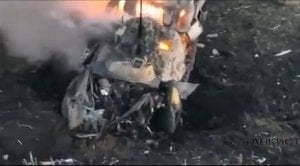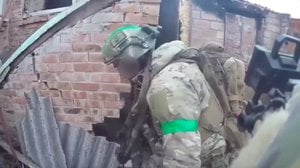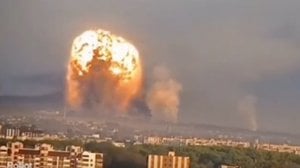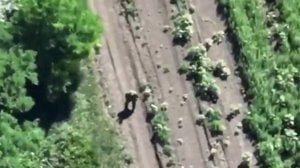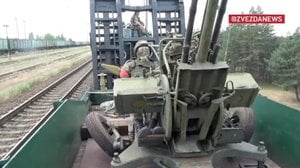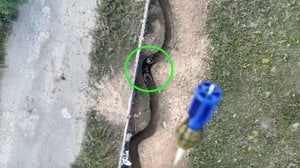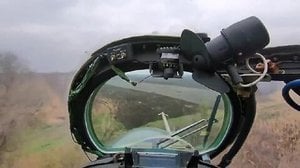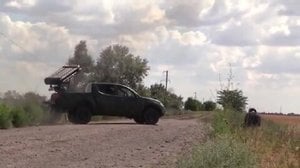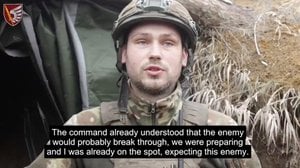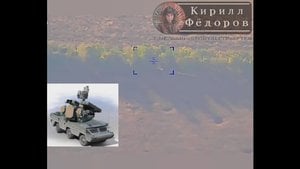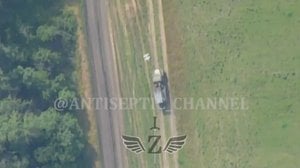
(NSFW) Assault Smacked by Arty and Crushed by Counterattack
Published 7 months ago
Footage provided by the Ukrainian 8th Mountain Battalion, 10th Assault Brigade, likely near Bakhmut, of a Russian mechanized assault which is stopped cold by artillery and crushed by an infantry counterattack. Russian BMPs are shown advancing across open ground before halting to allow their infantry to dismount. There is a skip in the footage and then one of the BMPs is shown in flames, purportedly struck by Ukrainian artillery, leaving the Russian dismounts to cope on their own. They move away from the disabled vehicles to take refuge in a trench running through as small grove of desiccated trees, only to be targeted by artillery. After another cut scene we see the remaining Russian soldiers in the trench, cornered by counterattacking Ukrainian infantry. The Russians attempt to flee, climbing over their comrades as they attempt to scramble out of the trench under a hail of grenades and small arms fire. Some never make it out of the trench, while others attempt their escape and are struck as they crawl. Another cut scene and the video closes with a shot of the Russian survivors as prisoners of war.
There is much which can be gleaned from this footage. The Russian Army continues to struggle with combined arms operations and the finer points of mechanized operations. Advancing across open ground is never a great idea, and effective infantry and armor must utilize foliage, structures, and undulations in the terrain as cover and concealment, avoiding open ground until the final moments of the assault. Sometimes the situation does not permit such an approach, which is why preparatory and suppressive fires play such a critical role in disrupting the enemy’s ability to successively engage the attacking force. The Red Army was a firm believer in this, and while their approach generally eschewed clever use of the terrain for a mad rush into the Fulda gap, they sought to limit casualties by saturating the defender with both close and deep fires, a very Soviet approach to combined arms. This approach approach works when entire artillery brigades are firing in support of shock armies, but the company or battalion-sized piecemeal attacks launched by the Russians lack the requisite mass to overcome defensive fires, even if they have adequate fie support, which they do not. There is little evidence that this unit benefitted from close fires to suppress enemy defenders, or deep fires to silence Ukrainian batteries.
Additionally, Russian mechanized infantry tactics are lacking. This is not the first video that I have seen recently demonstrating a complete disregard for dispersion. Not only does this increase the potential for multiple vehicles being targeted by a single artillery strike, it increases the risk to infantry as they dismount. In this case, all of the vehicles were damaged or destroyed and unable to offer any direct fire support to their dismounts, who were left to fend for themselves. Additionally, the stranded infantrymen either lacked the ability or their wherewithal to summon mortars or artillery to cover their retreat. All of these are hallmarks of poor tactics by unit leaders, a lack of tradecraft amongst the vehicle crewmen, and a dearth of training at the small unit level.
The Ukrainians, on the other hand, seem to have stumbled upon an interesting formula for defeating these mechanized attacks. This is the second video that I have reviewed today which shows Russian BMPs being destroyed after they deliver their infantry to the fight. With the battle-taxis disabled, the dismounts must fend for themselves and are cut apart by counterattacking Ukrainian infantry. I do not know if this is intentional or a coincidence, but it is effective. This is also an effective use of a tactical reserve and shows effective coordination between Ukrainian firing agencies and maneuver elements.
About the Author
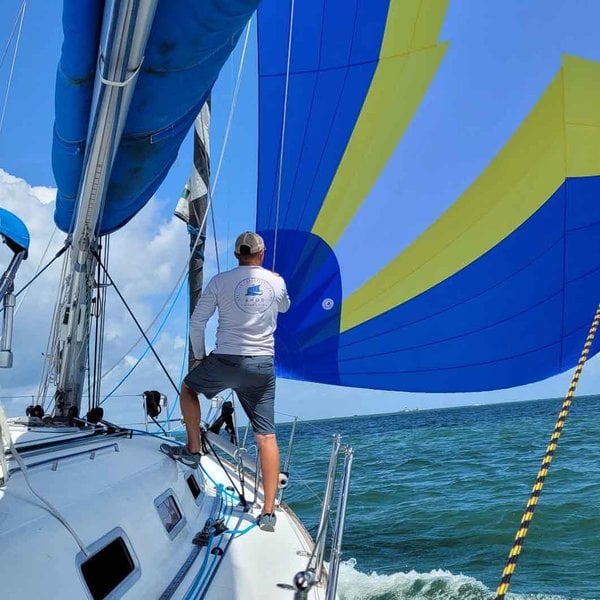
Cam
Cam served as an infantry officer in the Marine Corps, deploying to the Horn of Africa and participating in combat operations in Iraq. He currently works in the maritime industry and in the defense sector as an instructor of combined arms planning and operations. An avid sailor, Cam founded and directs Triumph Sailing, a nonprofit that supports veterans and first responders through adventure and fellowship on the water. Triumph Sailing just completed its big yearly event, an offshore race in the Gulf of Mexico with an all veteran crew. You can support the mission and next year's sailing season at Tri-Sail.Org.



